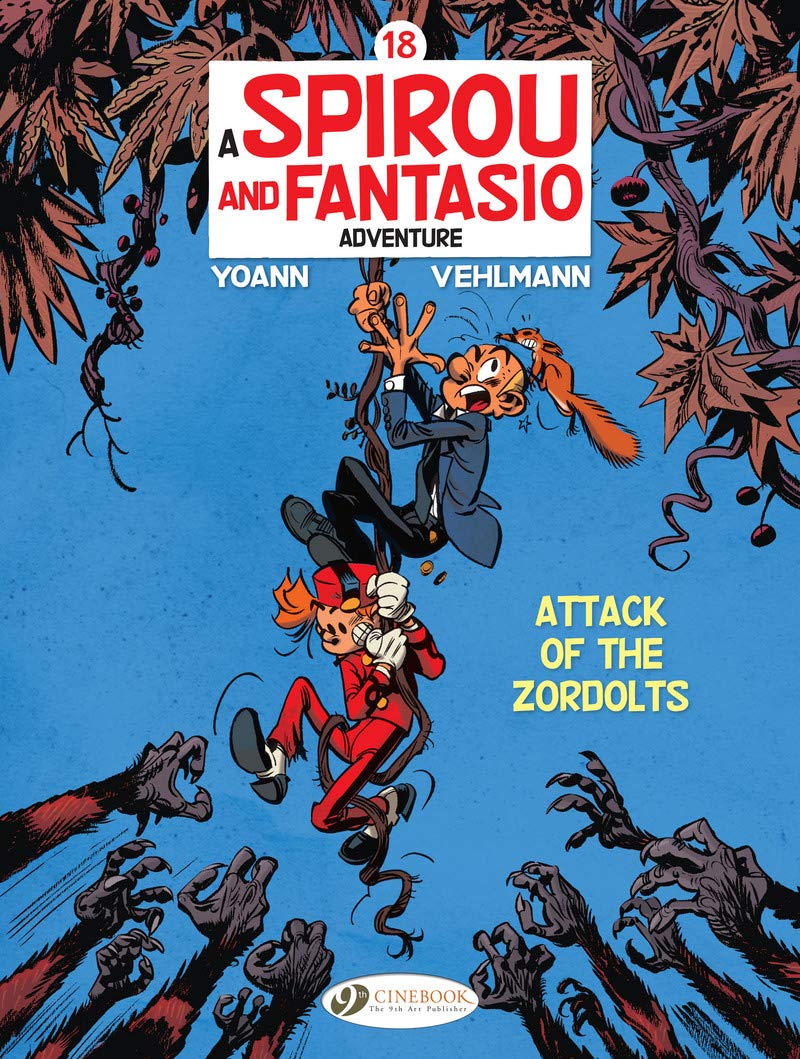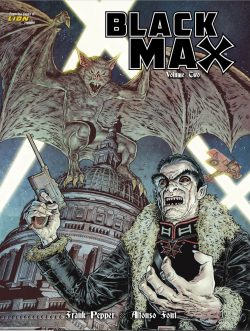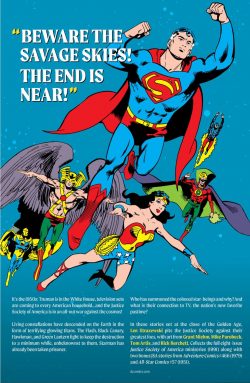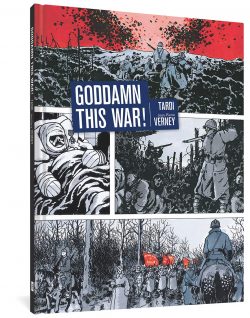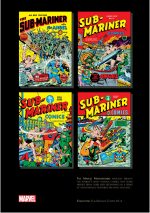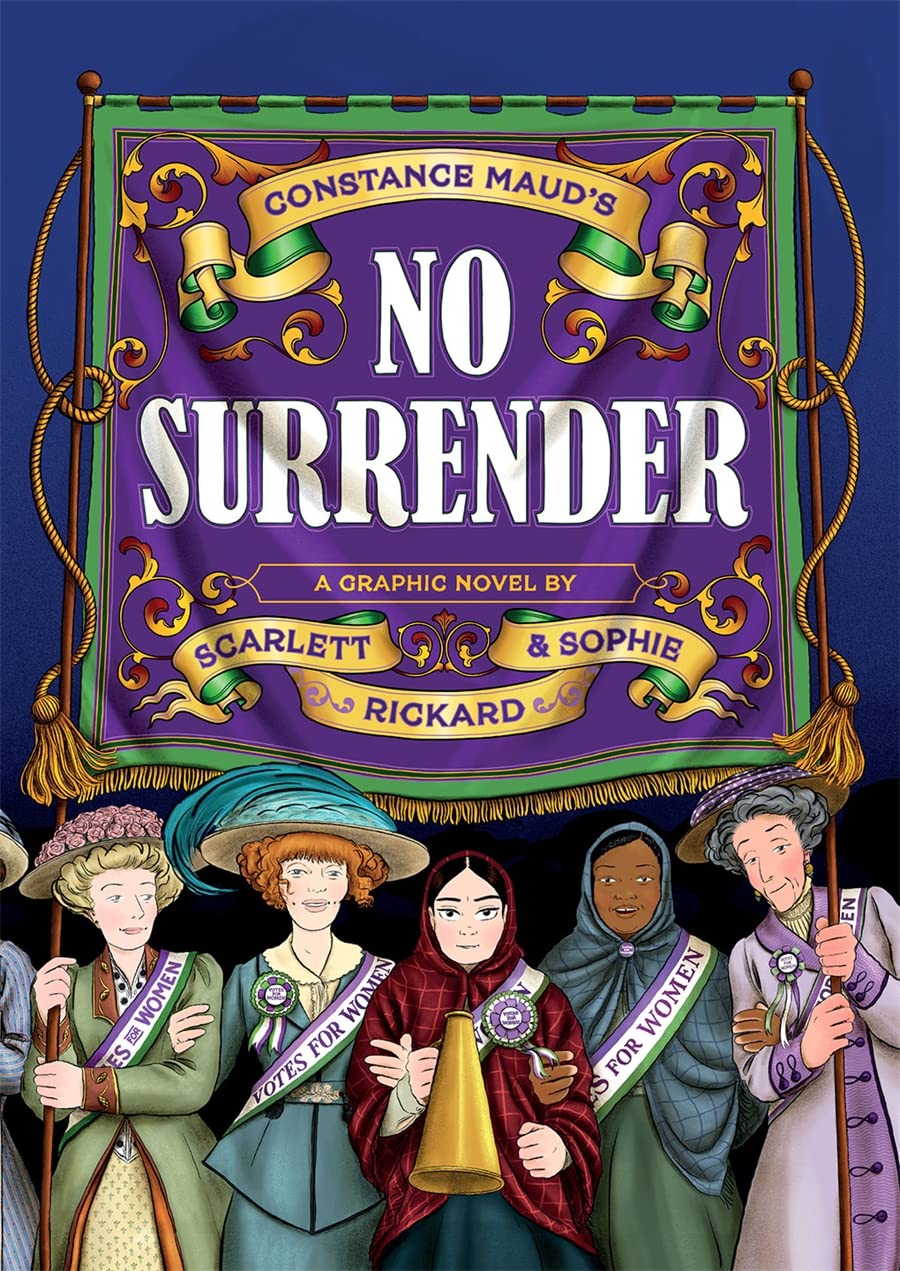

By Tom Tully, Jesús Blasco & various (Rebellion)
ISBN: 978-1-78108-681-2 (TPB/Digital Edition)
Win’s Christmas Gift Recommendation: Vivid Visions of Wonderful Weirdness… 9/10
One of the most fondly-remembered British strips of all time is the startlingly beautiful Steel Claw. From 1962 to 1973, the stunningly gifted Jesús Blasco and his small studio of family members thrilled the nation’s children, illustrating the angst-filled adventures of scientist, adventurer, secret agent and even costumed superhero Louis Crandell.
The majority of the character’s career was scripted by prolific and versatile comics veteran Tom Tully (Roy of the Rovers, Heros the Spartan, Dan Dare, House of Dolmann, Master of the Marsh, Janus Stark, Mytek the Mighty, The Wild Wonders, Nipper, Adam Eterno, The Mind of Wolfie Smith, Johnny Red, Harlem Heroes, Mean Arena, Inferno, The Robo Machines, Football Family Robinson, Buster’s Ghost and many more).
He followed the precepts of H.G. Wells’ original unseen adversary which had been laid out by science fiction novelist Ken Bulmer who had devised the strip, presenting some modern spin on Victorian classic The Invisible Man.
In the 1960s, however, our protagonist acted with evil intent as soon as he fell out of sight of his fellow humans, not through innate poor character but because of wild technology accidentally unleashed …
Another stunning salvo of graphic wonderment from Rebellion’s Treasury of British Comics strand, this second collection is available in paperback and digital editions. The Steel Claw: The Reign of the Brain gathers material from timeless weekly anthology Valiant, spanning 28th September 1963 to 19th September 1964 and is accompanied by an Introduction from writer and editor John Freeman (treat yourself to his downthetubes.net site for all your nostalgia and comics needs!)
What has gone before: Louis Crandell was an embittered man, probably due to having lost his right hand in a lab accident. After his recovery and its replacement with a steel prosthetic, he returned to work as (a rather surly) assistant to venerable boffin Professor Barringer, who was attempting to create a germ-destroying ray.
When that device exploded, Crandell received a monumental electric shock and was bathed in radiation from the ray-device. Rather than killing him, the incident rendered him totally transparent and changed his body chemistry. Although he couldn’t stay unseen forever, the bodily mutation permanently affected him, and subsequent electric shocks caused all but his metal hand to disappear.
These were simpler times and there was far less SCIENCE around so please – Kids Of All Ages – do not try this at home!
Whether venal at heart or temporarily deranged, Crandell went on a rampage of terror, even attempting to blow up New York City before finally coming to his senses. Throughout Crandell’s outrages, guilt-fuelled Barringer was in pursuit, resolved to save or stop his former friend…
After his cure, the invisible man was so globally notorious and well known that he was framed by his own therapist. Whilst treating Crandell Dr. Deutz was also traumatically exposed to Barringer’s ray but instead of invisibility, he gained the power to transform into a bestial ape-man and turned to crime for fun. He malevolently placed the blame for his own spectacular robberies and assaults on his infamous patient…
On the run but innocent this time, Crandell was saved by the intervention of Barringer’s niece Terry Gray. After weeks of beast-triggered catastrophe and panic in the streets, the Steel Claw was vindicated and proved himself a hero. Despite that, a quiet life was clearly beyond the unseen celebrity, and while seeking anonymity in the Bahamas, he was embroiled in a modern-day pirate’s attempt to hijack an undersea super-weapon and plunder cruise ships…
With this volume, Crandell continues his gradually shift from victim to reluctant hero: accepting his powers and an elite if danger-ridden role at the fringe of society. During the first saga reprinted here, he made a decision that would affect the rest of his life.
Taking stock at a time when super-spies and science fiction were globally ascendent, Tully began with Crandell still courting obscurity. Building a life in San Lemo, capital of South American republic Curacos, Crandell is again recognised and chased by sensation-hungry mobs. The frantic pursuit drives him to a power station where someone takes a shot at him, and he is given a message by a dying man. The victim warns of the end of the world and gives Crandell a phone number, but the real convincer that it’s all deadly serious is the assassin with an electric raygun who starts shooting at him…
Caught up in a sea of lethal intrigue, the Steel Claw falls into an ongoing operation by British Intelligence group “Shadow Squad” and becomes point man in their investigation of a deranged super-genius dubbed ‘The Brain’ (running from 28th September 1963 – 4th April 11th 1964).
Amidst an increasing tide of man-made disasters and thanks to his uncanny gifts, angry determination and sheer dumb luck, Crandell infiltrates the Brain’s cult, invading his booby-trapped tropical island and exposing a scheme to destroy all life on Earth.
Anticipating our modern era’s huge surplus of spoiled, homely, insecure, self-confessed billionaire man-children petulantly making trouble, this duel of wills leads to global unrest and devastation, culminating in a spectacular war of Inventions against Invisibility & Ingenuity. In the end the Claw ultimately emerges – far from unscathed but at least alive – ready for more adventure…
The mission had already paid off big for Crandell: the first thing Shadow Squad did was to fake his death and proclaim that the Steel Claw was gone forever…
As ever, the series is made unmissable by the astounding art of Blasco – although the master is supplanted for a few episodes in the first story by fill-in artists who might or might not be Eric Bradbury & Mike Western…
The Claw’s clash of powers against the Brain is protracted, suspenseful, action-packed and in the end a close-run thing, but inevitably results in victory for the reluctant good guy who becomes a very special agent of the Shadow Squad and an operative of British Intelligence. Those connections next lead him into a secret war on home soil, as he faces the uncanny, barely-perceived threat of ‘The Lactians’ (11th April – 19th September 1964)…
The tense drama opens with our eventual hero back in London. Britain is reeling under twin crises: a plague of fireballs in the night sky over Cornwall and a rising toll of missing persons, and as Crandell rendezvous with his handler, they are ambushed by what appear to be ordinary citizens with bizarre intentions…
When “Shadow Five” dies, Crandell’s frantic fightback exposes the attackers as not of this world: sparking a one-man war against an alien race able to possess bodies and attempting to infiltrate and subjugate mankind via its isolated rural communities – a classic theme of cold war science fiction of the era.
Even with other artists again stepping in to counter the problems of weekly deadlines and international postal deliveries in a pre-digital age, the tenson and terror never relent as the Invisible Man slowly works his way through an all-but indetectable army of enemies to the thing at the top: risking everything on one final desperate counterstrike…
This potent thriller tome also comes with a teaser excerpt from the forthcoming Steel Claw Super Picture Library collection, again highlighting the work of Tully & Blasco…
More than any other comics character, the Steel Claw was a barometer for reading fashions. Starting out as a Quatermass-style science fiction cautionary tale, the strip mimicked the trends of the greater world, evolving into a James Bond-style super-spy strip – with Crandell eventually tricked out with outrageous gadgets – and latterly, even a masked and costumed super-doer after TV-triggered “Batmania” gripped the nation and the world.
When that bubble burst, he resorted to becoming a freelance adventurer, combating eerie menaces and vicious criminals.
The thrills of the writing are engrossing enough, but the real star of this feature is the artwork: captivating classicist drawing, moody staging and the sheer pristine beauty of all participants making this an absolute pleasure to look at.
Jesús Monterde Blasco was born in Barcelona in 1919 and began his phenomenal career in 1935, drawing for Mickey magazine. Barely known now in the English-speaking world, his vastly varied output included Cuto, Anita Diminuta, Los Tres Inseperables, Los Guerilleros, Paul Foran, Tom Berry, Tex Willer, Tallafero, Capitán Trueno and Une Bible en Bande Dessinée for continental and South American audiences. His many UK strips include the lush and lavish Buffalo Bill, sci-fi chiller The Indestructible Man, Billy the Kid and the first Invasion! serial (2000 AD from #1, 1977). He died in October 1995.
This is sheer addictive nostalgia for my generation, but the stories also hold up against anything made for today’s marketplace. Buy it for the kids and read it too; this is a glorious book, and steel yourself for even better yet to come…
© 1963, 1964 & 2022 Rebellion Publishing IP Ltd. All Rights Reserved.



